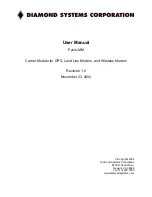
G2: Velocities, setpoint / actual value systems, closed-loop control
7.2 Velocities, traversing ranges, accuracies
Basic Functions
Function Manual, 09/2011, 6FC5397-0BP40-2BA0
335
In addition, it provides an overview of the following topics:
• Selection of measuring system (metric/inch)
• Scaling of physical quantities of machine and setting data
• Conversion of basic system
• Setting of computational resolution
7.2.5
Input/display resolution, computational resolution
Resolutions: Differences
Resolutions, e.g. resolutions of linear and angular positions, velocities, accelerations and jerk, must be
differentiated as follows:
• Input resolution
Data is input via the control panel or parts programs.
• Display resolution
Data is displayed via the control panel.
• Computational resolution
Data input via the control panel or parts program is displayed internally.
The input and display resolution is defined via the control panel being used, whereby the display resolution of
position values can be changed with machine data:
MD9004 $MM_DISPLAY_RESOLUTION
.
Machine data:
MD9011 $MM_DISPLAY_RESOLUTION_INCH
can be used to configure the display resolution of position values using the inch system.
This allows you to display up to six decimal places with the inch setting.
For the programming of parts programs, the input resolutions listed in the Programming Guide apply.
The desired computational resolution is defined via machine data:
MD10200 $MN_INT_INCR_PER_MM (computational resolution for linear positions)
or
MD10210 $MN_INT_INCR_PER_DEG (computational resolution for angular positions).
It is independent of the input/display resolution but should have at least the same resolution.
The maximum number of places after the decimal point for position values, velocities, etc., in the parts program
and the number of places after the decimal point for tool offsets, zero offsets, etc. (and therefore also for the
maximum possible accuracy). is defined by the computational resolution.
The accuracy of angle and linear positions is limited to the computational resolution by rounding the product of
the programmed value with the computational resolution to an integer number.
To make the rounding clear, powers of 10 should be used for the computational resolution.
















































